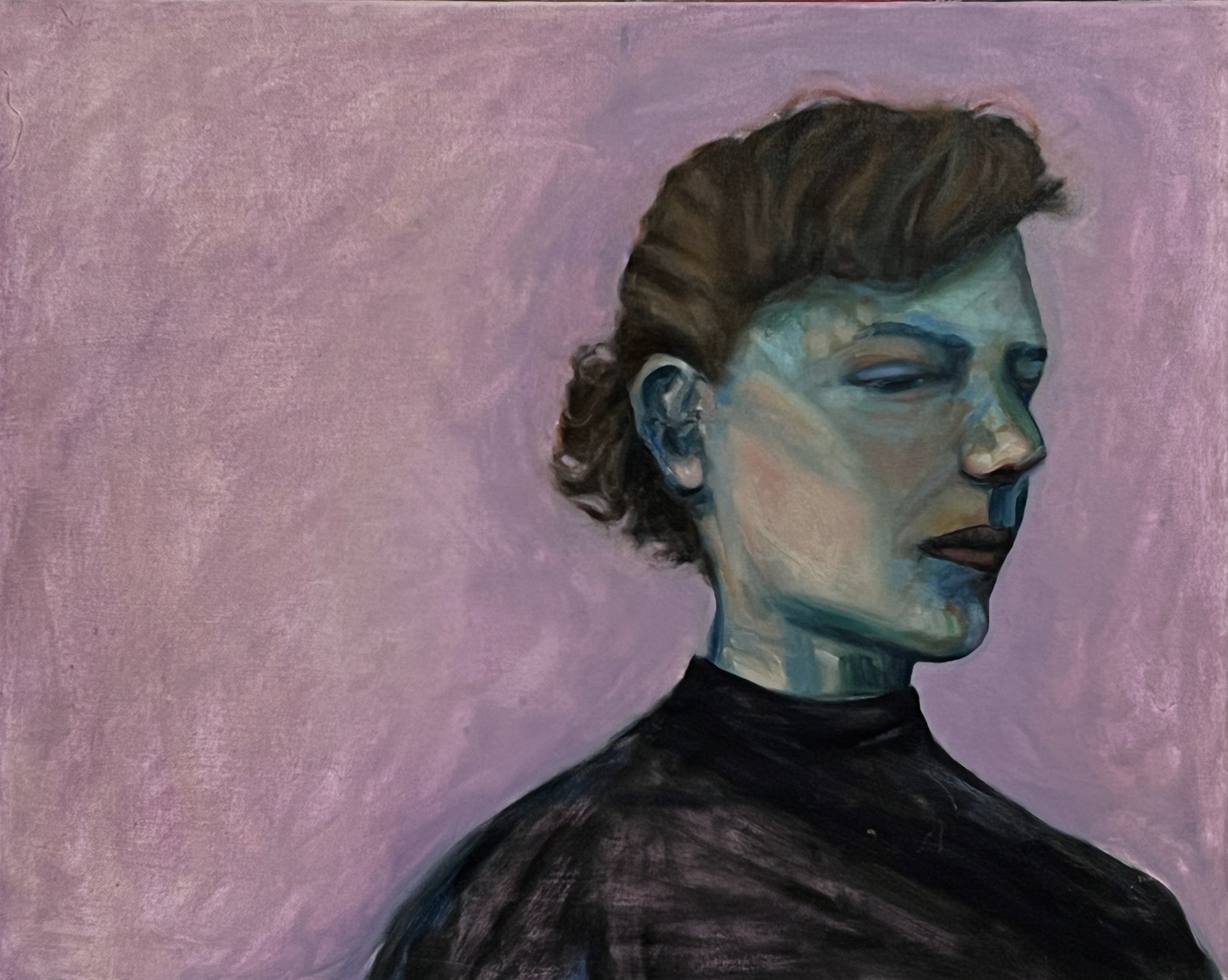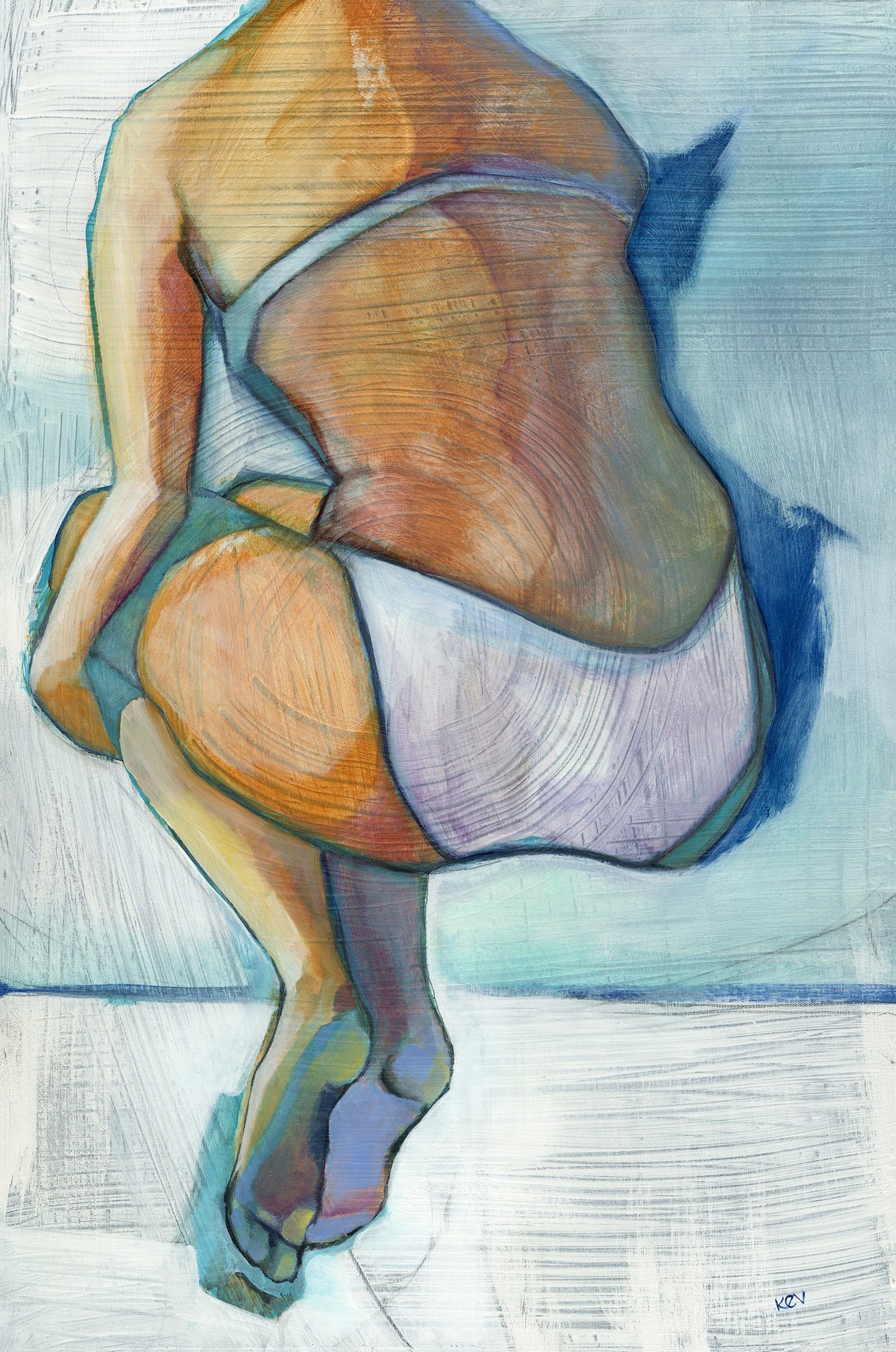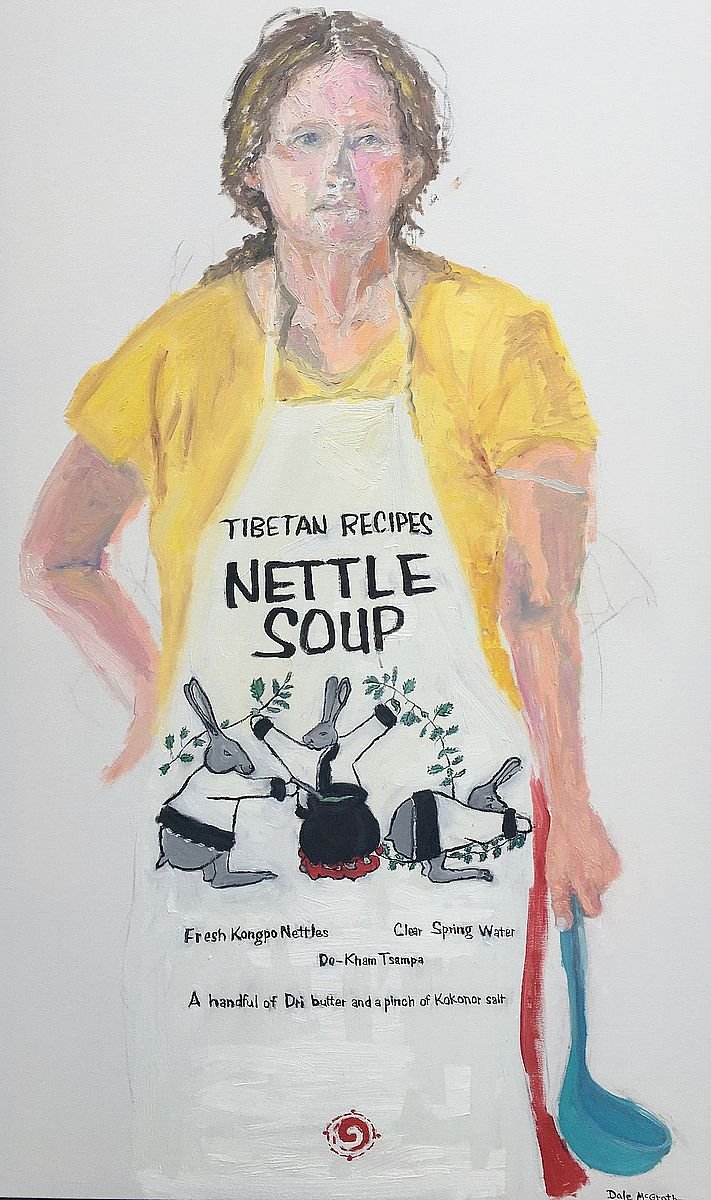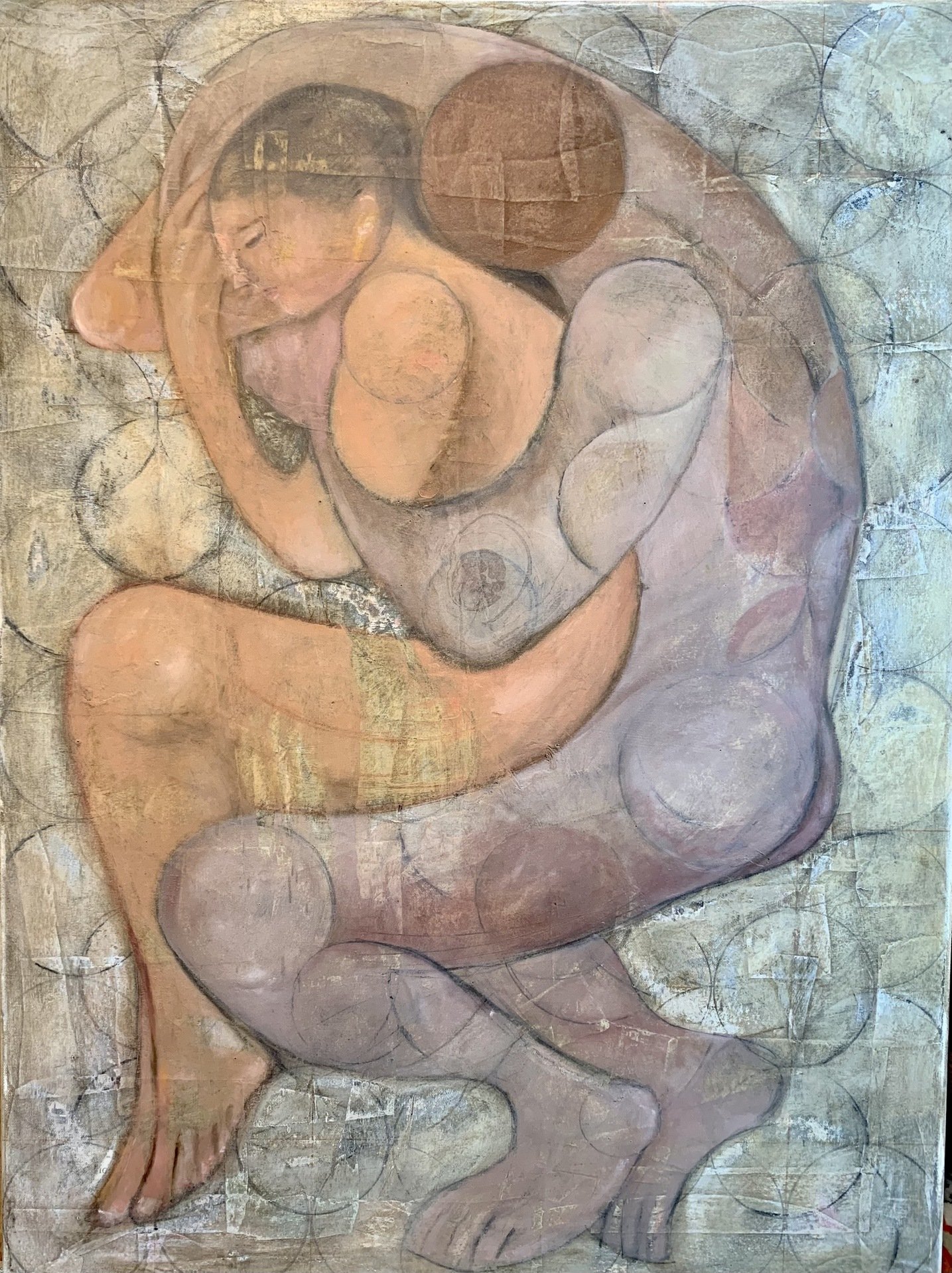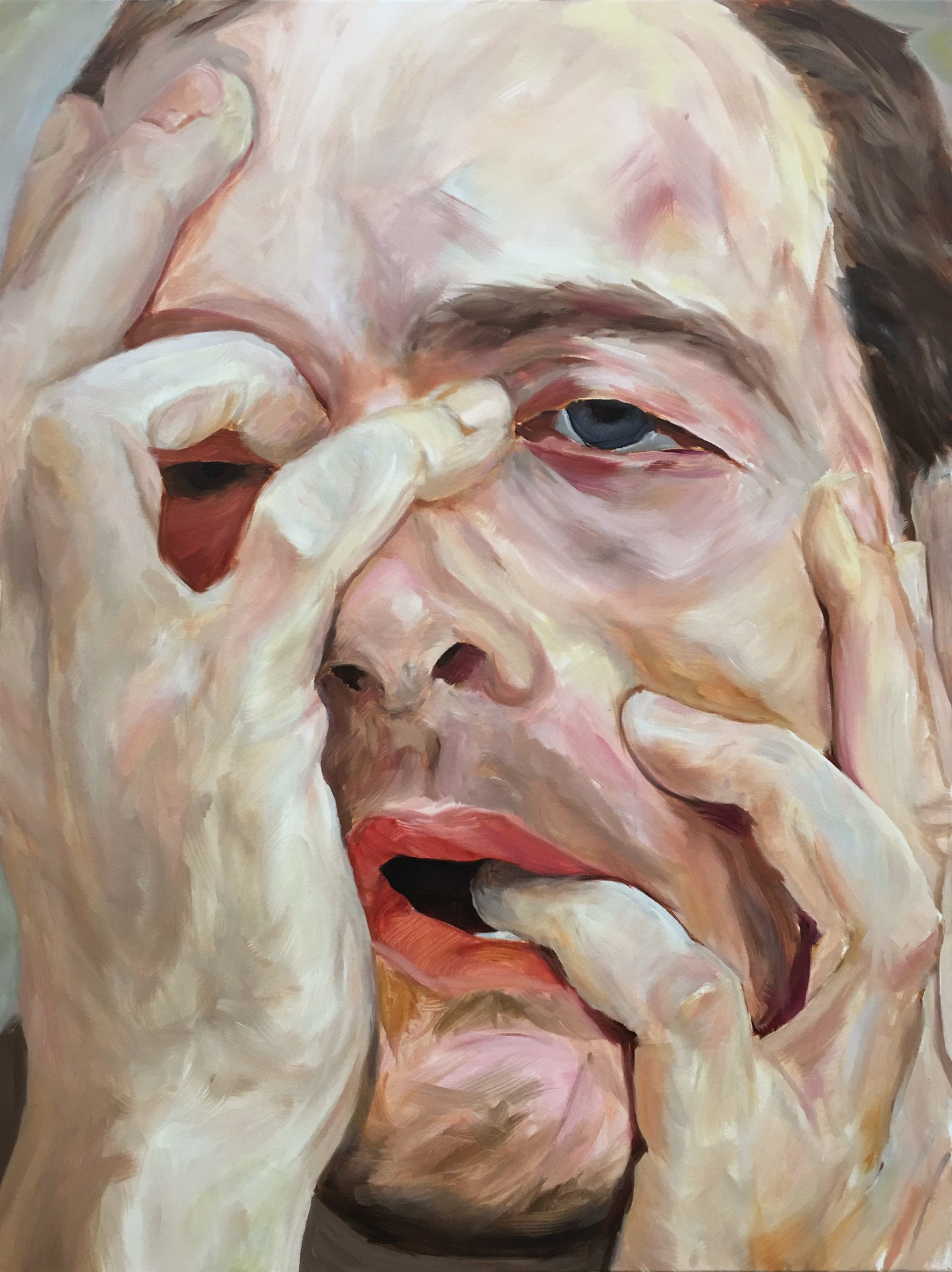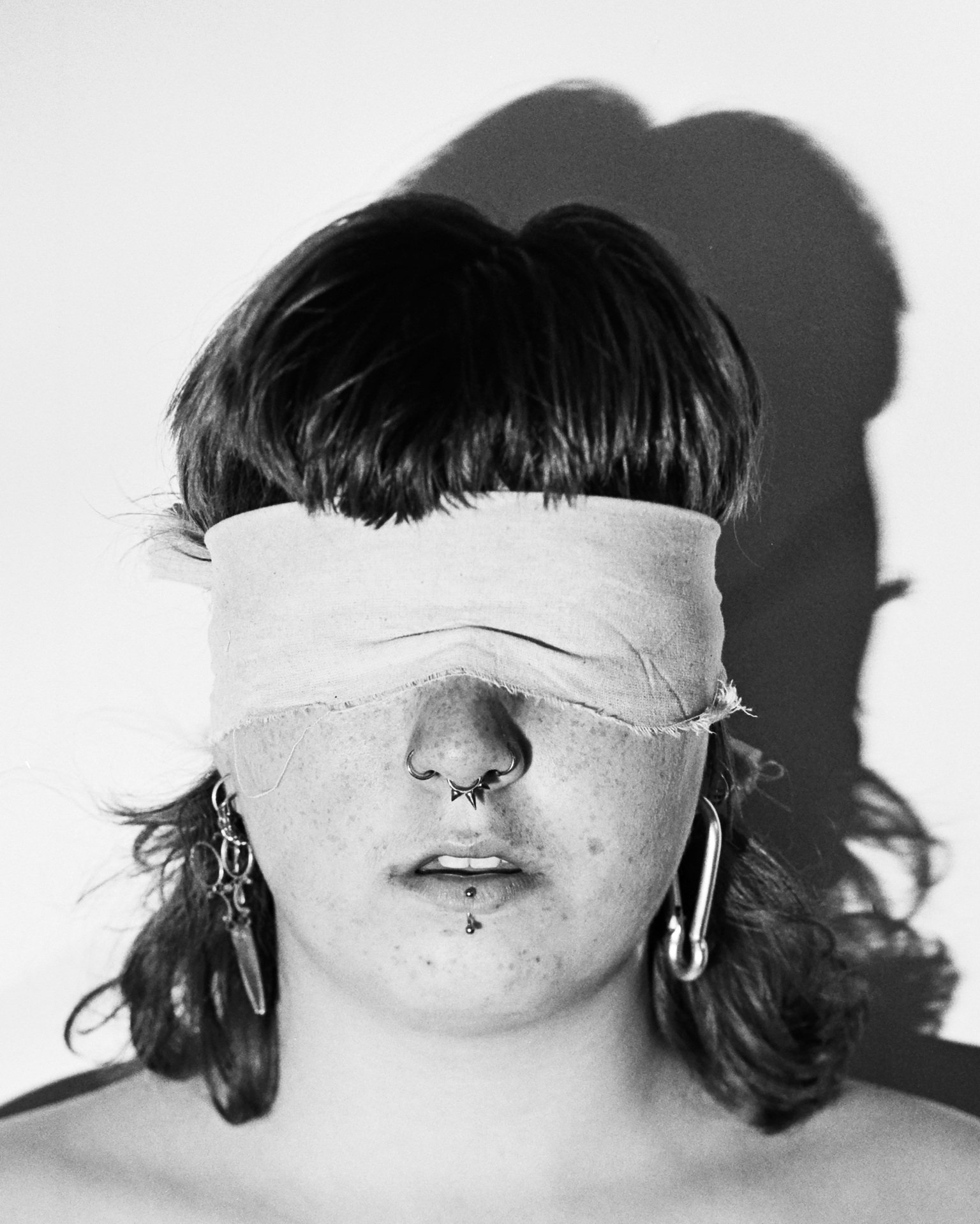Faces & Figures
Juried by Charlotte Jansen
Curatorial Statement
We are fascinated by our own forms. It’s no surprise that the act of trying to immortalize ourselves in artistic expressions predates even humanity – among the earliest known cave paintings were rudimentary stencils of hands in crimson printed onto the walls of caves in Maltravieso. They are thought to have been made by Neanderthals some 64,000 years ago.
Today we are no less enthralled by our own faces and figures. Artists remain unwavering in their determination to fix and describe our experiences by portraying our bodies. These attempts help us see ourselves better – to understand the world and our ever-shifting place in it.
The artists in this exhibition grapple with our image in various ways – some, by zooming in, enlarging, freezing to allow a lingering look at their subjects. Strangers on the subway or the artist’s own image, at home on an ordinary day, are all held up for inquiry and awe. Other artists respond differently to bodies, using collage techniques to take them apart, as though to expose their unchanging truth – in this process of fragmentation the un-wholeness and incompleteness of bodies is revealed. The more intensely these artists gaze on themselves or others, the closer they come to confronting the transient nature of our existence, and our proximity to one another. Bodies that perform and transform inevitably decline and fade. There is, inevitably, a creeping sense of melancholy in this pursuit, a feeling that underscores many works in this exhibition, from those dealing with grief, documenting loved ones, or trying to understand how hardship becomes inscribed into physical experiences.
There is, of course, great pleasure in looking too – this exhibition presents buoyant brushwork and bright color palettes, that convey great joy and a sense of hope and optimism in humans. There are paintings, drawings and photographs here that celebrate the formal beauty of bodies, as well as acknowledging abiding power, as sites of resistance and resilience – iconic figures of Black Power such as Nelson Mandela as much as an anonymous construction worker.
The reasons for wanting to portray figures and faces may not have changed for millennia – but the way in which they do so has. New technologies have indelibly influenced the way we see ourselves and others. Though ranging from more abstract, expressionistic styles to realism, many of the painted portraits in this exhibition have a photographic, graphic sensibility in their compositions, or may be based on found, archival or family photographs or use them directly in the work. Elsewhere, works play with the contemporary awareness of being constantly watched and surveilled: one series employs machine learning to create digital images based on footage of those who stormed the Capitol Building during the attack of 2021.
Our bodies hold histories. Art may be a way to hold onto those histories, like handprints on a cave wall, a simple declaration that we existed. – Charlotte Jansen
Voyeuristic Tendencies
RUBA NADAR / ASHLEY OBEL / EVE WEINER / SCOTT SAGER / DEVIN RATHEAL / NICOLE DI FABIO
There is often an erotic charge in portraits, an intimate, sometimes troubled power dynamic that takes place between artist and subject, but also between viewer and subject. Ruba Nadar, an undergraduate at the Royal College of Art, London, uses close-up crops of groins or cleavage emphasize and exaggerate this effect, working from photographs the artist has taken that are reframed as dramatic vignettes of unknown figures.
Similarly, Scott Sager slices his compositions so that only slivers of his subjects are seen, creating an eerie and enigmatic atmosphere. In Devin Ratheal’s expressionistic oil portrait, a close cropped view is also important – a direct confrontation with the subject, who claws his face in an imploring pose. The expressionistic paintings of Nicole Di Fabio are quietly intimate. The domestic setting suggests a certain kind of ease; one elongated figure reclines nude in a chair, another rubs their head with a towel after a shower.
Pratt Undergraduate Eve Weiner draws on avant-garde feminist performance and photographic artists in their self-portraits, which explore sex, violence, trauma, queerness and kinks – here by binding their own face with twine and blindfolds so that they are physically unable to see. Ashley Obel, meanwhile, works with found photographs of strangers at night, creating unsettling new narratives for gatherings around campfires.
Odes to Form
JACQUELINE BUCK DONADEO / SAMARA COURI / KEVIN DUCOING / NICOLE DUET / DALE MCGRATH / EDWARD MILLS / LINN SAFFER / COLIN WARD / PAULA BULWINKEL
Many artists in this exhibition explore formal ideas of portraiture in studies of faces and figures, favoring gestural brushwork and classical compositions. Photographer Colin Ward captures a timeless female nude against a blue sky, but photographed from below, there’s a sense of subtle switch in power. Samara Couri’s resplendent portraits, reminiscent of the lush, expressionistic language of Lucian Freud and Nicole Duet’s portraits of female figures, have an intense, psychological pull. Dale McGrath, a mother of five, paints herself in her apron, in her kitchen, in a moment of reflection, ladle in hand – it’s the details that give a sense of this person’s emotional life, years of experiences compressed in layers of paint. The expressive potential of paint is explored too in Paula Bulwinkel’s portrait of her mother aged 16, Edward Mills’ pensive single portraits, and Linn Saffer’s dynamic double portraits, all using strident background color to evoke an emotive aura around their subjects. Jacqueline Buck Donadeo’s oil paintings employ warm tones and gestural brushstrokes to create a cinematic atmosphere around scenes of people in otherwise ordinary, everyday settings and situations.
Urgent expressions of our time
KIEL FLETCHER / SCOTT GLASER / CATHERINE MELLINGER / HARVEY MILMAN / PETER MOEN / LAWRENCE MONTGOMERY / TIFFANY WERNICK / ALEC MACLEOD / DAVID JANSSEN JR
Faces and figures bear the weight of history, but also anchor us to our particular time: the details in these works often point to the social and political concerns of the artists, who each respond to some of the most urgent issues of our era. There are documents of personal loss: David Janssen Jr’s poignant portrait, part of a series, honors the life of his late sister, Renae, who lost her life to Covid-19 in 2020. Memory, love and sense of grief and longing permeate his painting of his sister as he remembers her on her 7th birthday. Kiel Fletcher created a series of works ‘American Exceptionalist’ using machine learning. A bot was trained to seek out similarities in images of the faces of those who attacked the Capitol Building in 2021; it was then used to create 500 images based on those findings: the resulting series of menacing close-up images mimics, as Fletcher puts it, the way an image moves from anonymity to notoriety. Scott Glaser deals with celebrity images – specifically leading figures in the Black Power movement of the last fifty years, such as Aretha Franklin and Nelson Mandela, reconstructing their image in a mosaic crafted from bandages to signal pain and the possibility of healing. A trio of American painters, Harvey Milman, Peter Moen and Lawrence Montgomery paint scenes reminiscent of Social Realism, dealing with social and economic inequities in the US, observed through depictions of laborers, commuters, and consumers. Tiffany Wernick’s domestic scenes celebrate multicultural homes and how traditions – and love – is passed down through generations. Alec MacLeod creates a digital collage using found and made imagery to represent his experiences as a partially-sighted person. Also using collage to evoke her bodily experience, Catherine Mellinger transcribes her experiences of birth, lactation and physical caregiving as a parent, and the often conflicting sensory responses being a parent brings about, into beguiling shapes and floating forms.
Bodily Abstractions
STEVEN PALUMBO / CINDY ZAGLIN / JO HENDRICKS / JULIA FOUG / BENJAMIN CUNNINGHAM / MAUREEN BENNETT
A group of the artists selected for ‘Faces and Figures’ are concerned with abstracting bodies into shapes or forms, moving away from realistic representations or documentary narratives to find a more fluid and open language in the sphere of figuration. These include Cindy Zaglin, whose mixed media works are inspired by her experiences of being a Plus Size woman; Jo Hendricks’ bright, voluminous forms who push right up against the edges of the paper; and Benjamin Cunningham’s graphic, Surreal-influenced piles of nude bodies, crammed into the composition, vying for space. Julia Foug uses loose brushwork and plays with negative space in her impressionistic nudes, in dialogue with the powder soft, expressive techniques used by Steven Palumbo, who portrays a scene of lovers curled in an endless embrace.
These expressive works often give the feeling of bodies, moving in space, of their material, ethereal, ever-changing beauty; Maureen Bennett makes portraits of women from the South Bronx, prints them onto rice paper and collages them onto wooden boxes; she then rubs the paper, so as to partially erase the faces, the repaints them with ink. These multiple layers of mediums and textures describe the complexity of our being.





